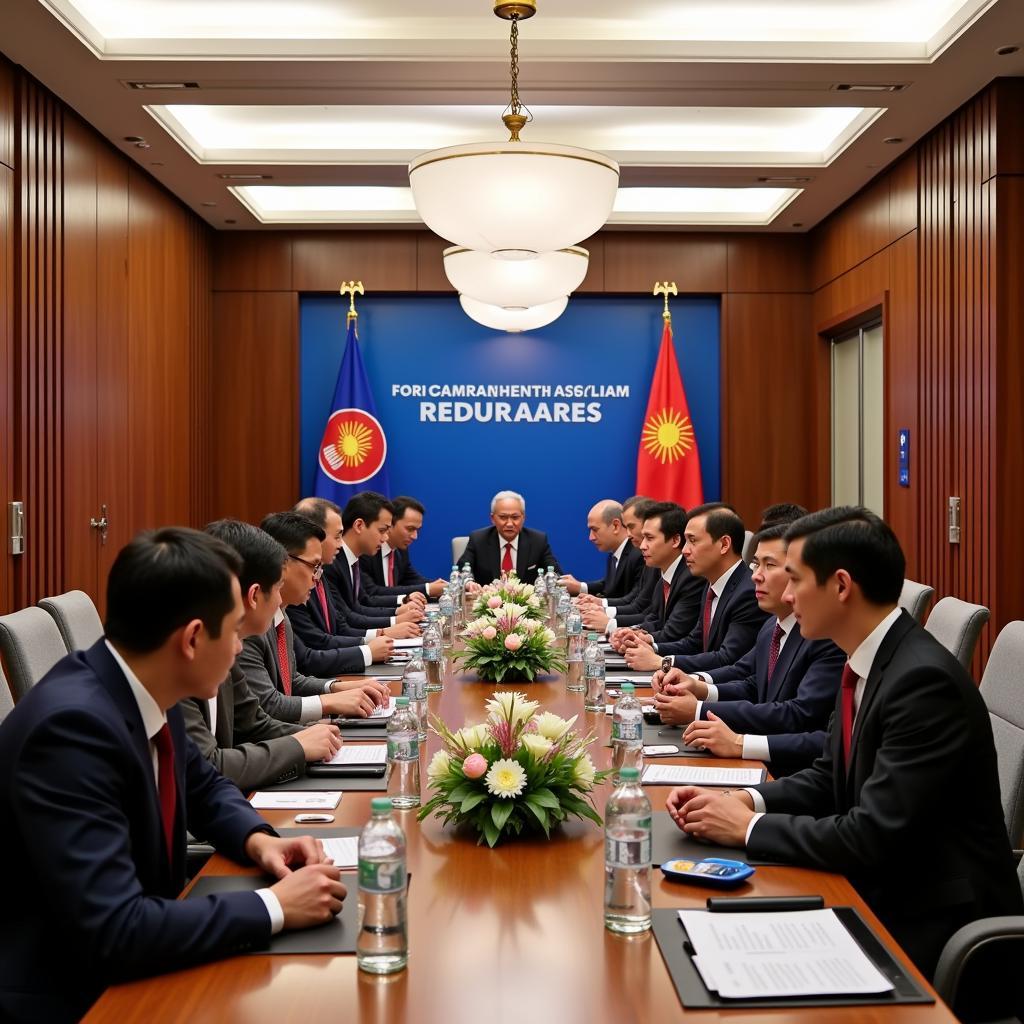ASEAN, the Association of Southeast Asian Nations, has emerged as a significant force on the global stage. In just over five decades, this diverse coalition of nations has achieved remarkable progress, fostering cooperation and driving growth across Southeast Asia. This article will delve into 5 key achievements of ASEAN, highlighting its impact on the region and beyond.
ASEAN’s commitment to economic integration is a cornerstone of its success. The ASEAN Economic Community (AEC) aims to create a single market and production base, facilitating the free flow of goods, services, investments, skilled labor, and capital. This initiative has stimulated economic growth and made the region more attractive to foreign investors. The 15th asean economic community aec council meeting further solidified the commitment to these goals.
Economic Growth and Integration: A Key Achievement of ASEAN
One of the most significant achievements of ASEAN is its success in fostering economic growth and integration. The combined GDP of ASEAN member states has grown substantially, transforming the region into a dynamic economic hub. This growth has been fueled by increased trade within the region and with global partners.
How has ASEAN promoted economic growth?
By reducing tariffs and non-tariff barriers, ASEAN has created a more favorable environment for businesses to thrive. This has led to increased investment, job creation, and improved living standards for millions of people across Southeast Asia. The AEC blueprint continues to guide these efforts towards greater integration.
Maintaining Peace and Stability in Southeast Asia
Another notable achievement of ASEAN is its role in maintaining peace and stability in a region with a complex geopolitical landscape. Through dialogue and diplomacy, ASEAN has managed to prevent conflicts from escalating and has fostered a spirit of cooperation among member states. This focus on peaceful resolution has created a more stable environment for economic development and social progress.
What mechanisms has ASEAN used to maintain peace?
ASEAN has established various mechanisms for conflict resolution and confidence-building measures, including the ASEAN Regional Forum (ARF). The arf asean 2017 meeting serves as an example of the ongoing commitment to regional security. These initiatives have helped to address potential flashpoints and maintain a peaceful environment.
Social and Cultural Development: A Hallmark of ASEAN
ASEAN has also made significant strides in promoting social and cultural development across the region. Through initiatives focusing on education, healthcare, and cultural exchange, ASEAN aims to improve the quality of life for its citizens and foster a greater sense of community. The asean 5 year work plan on education 2016 2020 demonstrates the commitment to improving education within the region. This focus on human capital development is crucial for long-term sustainable growth.
What are some examples of ASEAN’s social initiatives?
ASEAN has implemented various programs to improve healthcare access, promote education, and preserve cultural heritage. These initiatives are essential for fostering inclusive growth and building a more resilient and prosperous region. What is ASEAN 1? The asean 1 là gì page explains the concept.
Enhanced Regional Connectivity: Bridging the Gaps
Improving regional connectivity is another key achievement of ASEAN. By investing in infrastructure development and streamlining transportation networks, ASEAN aims to facilitate the movement of goods, services, and people across the region. This improved connectivity has reduced transportation costs, boosted trade, and enhanced tourism.
How has ASEAN improved connectivity?
ASEAN has implemented several projects to improve road, rail, air, and sea connectivity. These initiatives have made it easier for businesses to operate across borders and have strengthened economic ties between member states.
Strengthening ASEAN’s Global Voice
ASEAN has also made strides in strengthening its voice on the global stage. By working together, member states can amplify their influence and advocate for their shared interests in international forums. This collective approach has enabled ASEAN to play a more prominent role in shaping global discussions on issues such as trade, climate change, and security. The fascinating story detailed in asea genesis story provides valuable context for understanding the organization’s evolution.
 ASEAN Global Representation
ASEAN Global Representation
How does ASEAN engage with the international community?
ASEAN actively engages with other countries and international organizations through dialogues, partnerships, and joint initiatives. This engagement allows ASEAN to promote regional stability and prosperity while contributing to global peace and development.
In conclusion, ASEAN’s 5 achievements – economic integration, maintaining peace, social development, improved connectivity, and a stronger global voice – highlight its remarkable progress. These achievements have transformed Southeast Asia into a vibrant and dynamic region with immense potential. ASEAN’s continued commitment to cooperation and integration promises a brighter future for its member states and the wider global community.
FAQ
-
What does ASEAN stand for?
- ASEAN stands for the Association of Southeast Asian Nations.
-
How many members are there in ASEAN?
- ASEAN has 10 member states.
-
When was ASEAN established?
- ASEAN was established on August 8, 1967.
-
What is the main goal of ASEAN?
- The main goal of ASEAN is to promote regional cooperation and integration.
-
What are some of the key challenges facing ASEAN?
- Some key challenges include economic disparities, territorial disputes, and environmental issues.
Need support? Contact us 24/7: Phone: 0369020373, Email: [email protected] or visit us at: Thon Ngoc Lien, Hiep Hoa, Bac Giang, Vietnam.


